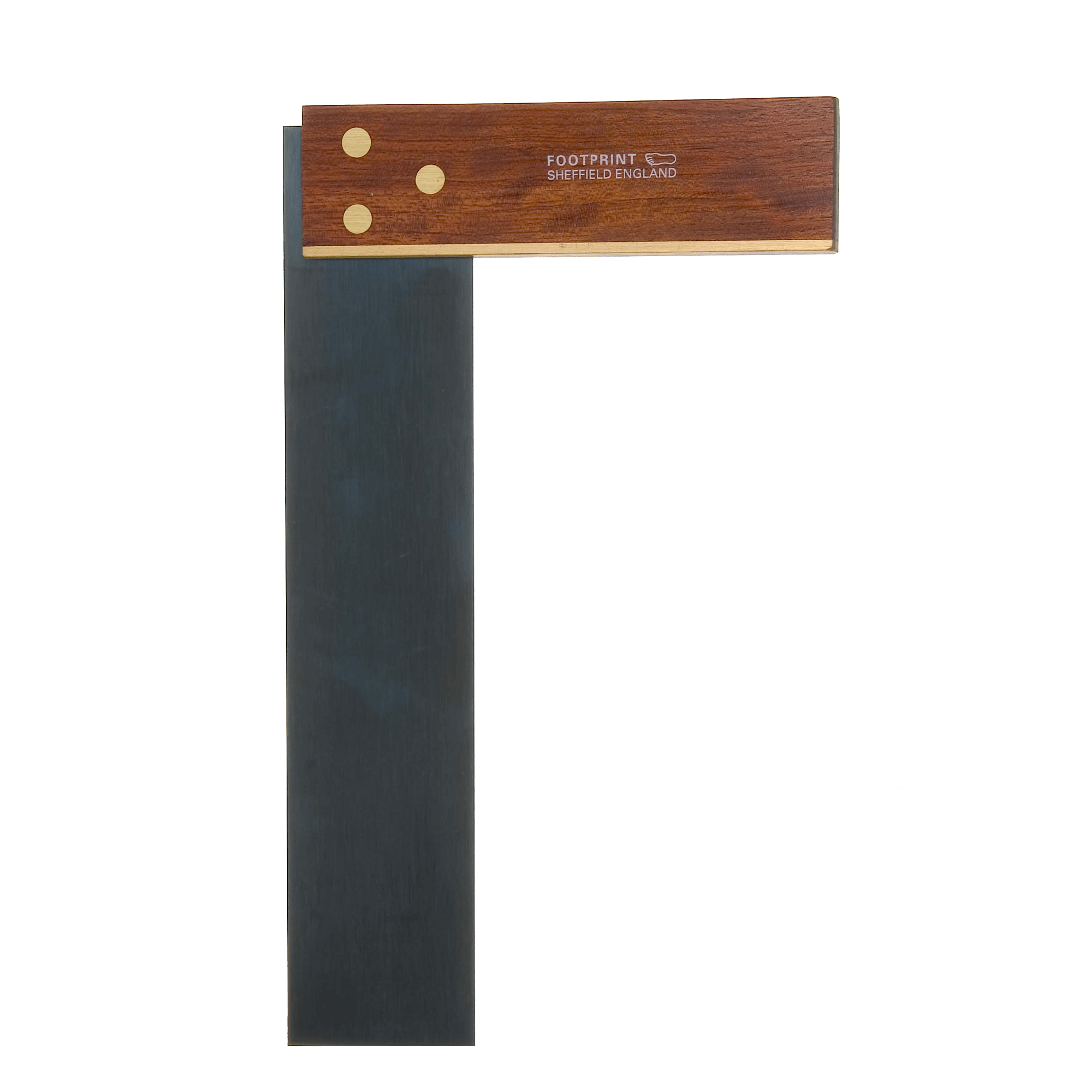Description
THIS PRODUCT: Rule size 230mm, Used for Marking Right Angles & Checking for Squareness, Chemically Blued Blade Helps Prevents Corrosion, Rosewood Handle.
IN GENERAL: A carpenter’s square, often referred to as a framing square, is a specialized measuring and layout tool commonly used in woodworking, carpentry, and construction. It consists of a flat, L-shaped metal ruler with two perpendicular arms at a 90-degree angle to each other. Here’s a brief description of a carpenter’s square and some common uses:
Description:
- Shape: A carpenter’s square typically has two arms—a long horizontal arm called the blade and a shorter vertical arm called the tongue. These arms meet at a perfect 90-degree angle, forming an L-shape.
- Measurement Markings: The arms of the square are marked with both metric and imperial (imperial and/or metric) graduations along their lengths, allowing for easy measurement of distances and angles.
- Lip or Lip Extension: Some carpenter’s squares have an extension or lip at the end of the tongue, which aids in gripping the workpiece and provides additional support when marking or cutting.
Common Uses:
- Right Angle Measurement: The primary use of a carpenter’s square is to measure and mark perfect 90-degree (right) angles. Carpenters use it to ensure that corners, joints, and assemblies are square and properly aligned.
- Marking 45-Degree Angles: While carpenter’s squares are primarily known for their 90-degree angle, they can also be used to mark 45-degree angles by aligning the tongue along the edge of the blade at the 45-degree mark.
- Layout and Marking: Carpenters use the square to lay out and mark cut lines, angles, and dimensions on various materials, including wood, plywood, drywall, and framing lumber.
- Roofing and Rafter Work: Carpenters and roofers use carpenter’s squares for layout and cutting of rafters, hip and valley rafters, and other angled components in roof framing.
- Staircase Construction: Carpenters use the square to measure and mark the rise and run dimensions on stair stringers, ensuring that the steps are evenly spaced and at the correct angle.
- Checking for Squareness: Carpenters often use the square to check for squareness in buildings, structures, and assembled components. It’s crucial in framing walls, door frames, and window frames.
- Making Crosscuts: Woodworkers and carpenters use carpenter’s squares as a guide for making crosscuts with saws, ensuring that the cuts are straight and perpendicular to the board’s edge.
- Diagonal Measurements: Carpenters can use the square to measure and mark diagonal lines or create diagonal layouts by using the square’s 45-degree angle.
- Scribing Lines: The straight edge of the square, particularly the tongue, can be used as a guide for scribing straight lines on surfaces or along the edge of a workpiece.
- Setting Up Machinery: In woodworking shops, carpenter’s squares are sometimes used to set up and align machinery, ensuring that cutting or routing operations are performed accurately.
Carpenter’s squares are fundamental tools for carpenters, woodworkers, and construction professionals. They provide precise measurements and help maintain square and accurate angles in various building and woodworking projects. Their simple yet effective design makes them essential for achieving high-quality results in construction and woodworking tasks.


